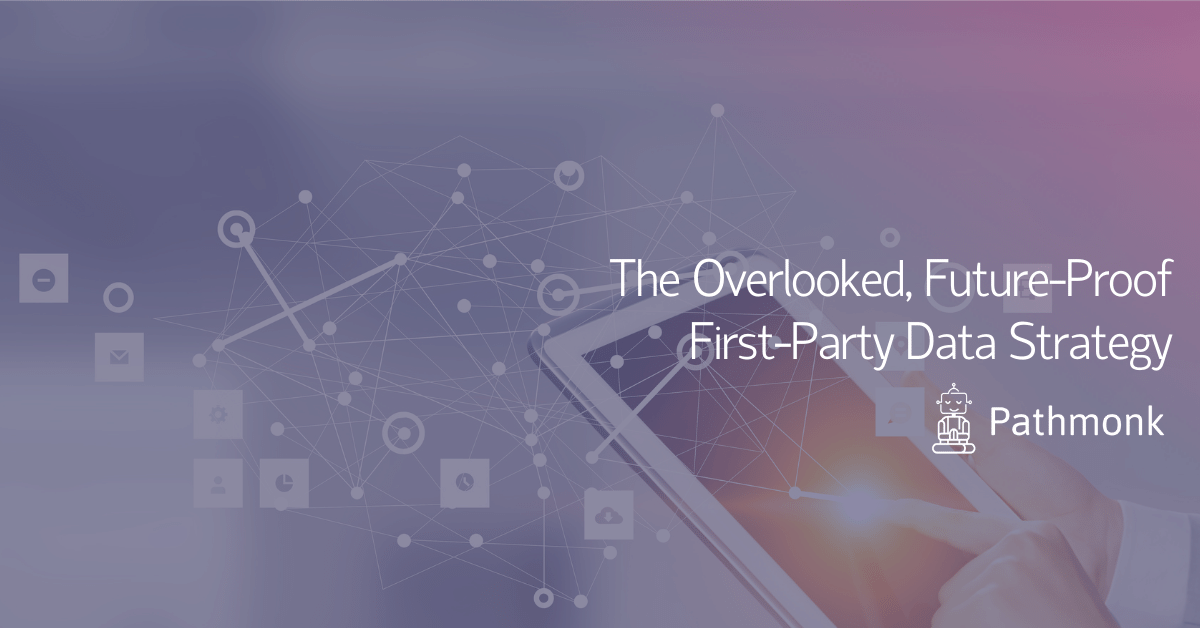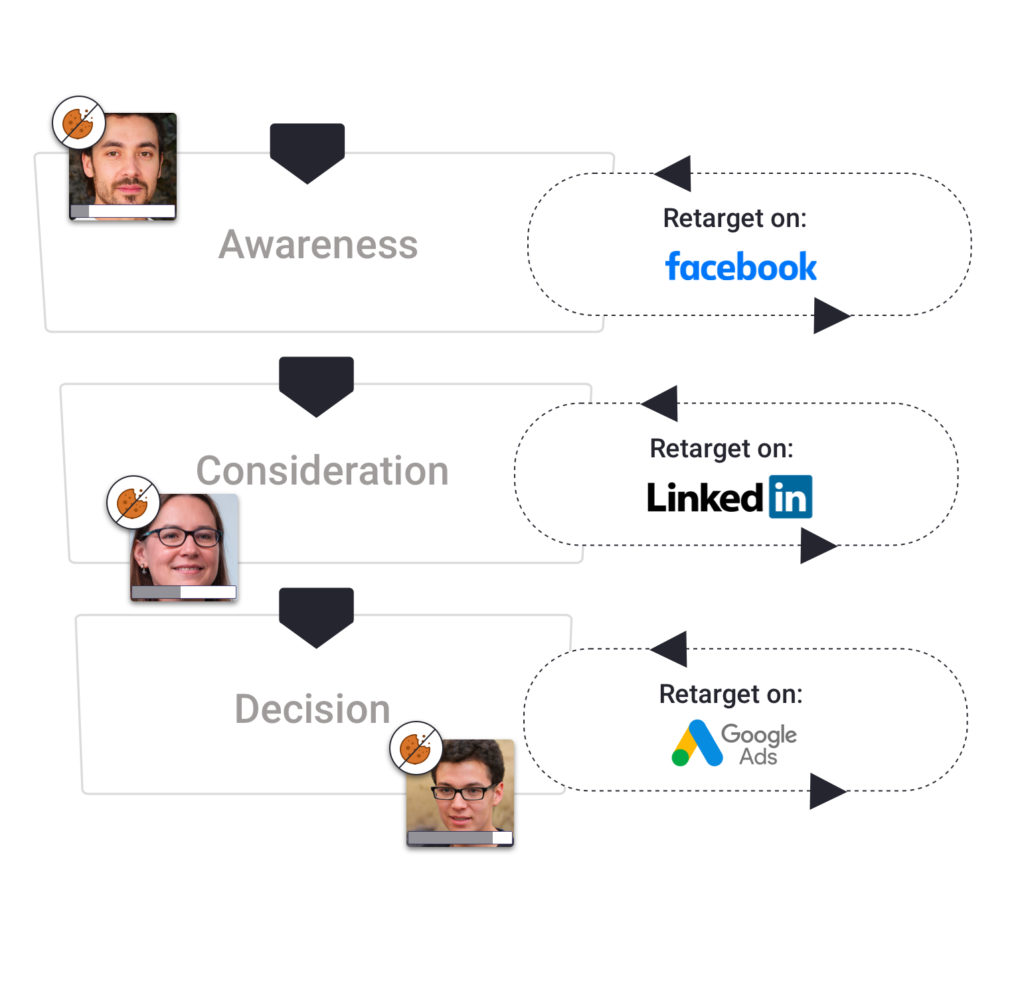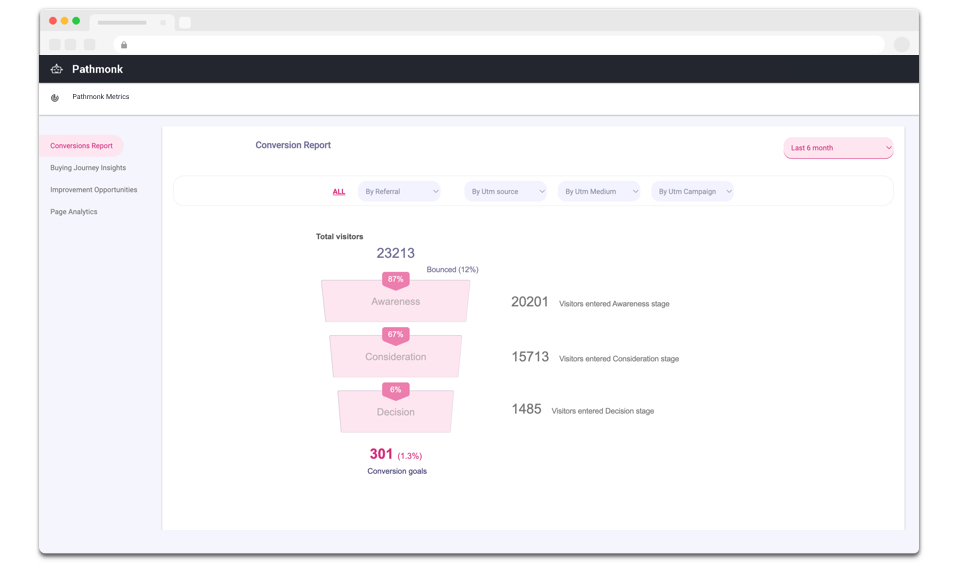The Overlooked, Future-Proof First-Party Data Strategy


When it comes to generating effective marketing strategies, implementing better user experiences, tracking prospects, understanding consumers, and executing retargeting campaigns we’ve relied on data. With this multi-platform, digital, and complex buying world marketers have become more like analysts working hard to meet audiences in the right places and ultimately understand what works and what doesn’t. In this circuitous buying journey, we have relied on data collection through cookies. But Google’s announcement to phase out third-party cookies has left marketers, behavioral analysts, and advertisers concerned; shifting their focus to first-party data strategies. But how can we collect data in a way that adheres to privacy policies, leverage data in a way that doesn’t leave our audience uncomfortable, and personalize user experiences effectively and valuably?
First-Party Data
As third-party cookies approach their end we turn our attention to the power of first-party data. First-party data is customer information collected passively and directly on your website, and other digital platforms, such as apps. This is both behavioral and declarative data that organizations use to personalize experiences. From remembering your login details, to your shopping cart to your language preferences this data is often collected through a pixel or a cookie, installed on your website to track the user activity.
This user-consented information allows you to understand your market, track onsite behavior, and gain more audience insights. However, collecting data through cookies requires analysis in order to understand customer preferences. Users are asked to accept the collection of cookies and as their skepticism grows, we have to shift our mindsets on the way we’re collecting data.
With complicated browser regulations and rules, the changing lifespan of these cookies, and the ongoing data concerns our consumers are continuing to express; we have to reconsider our dependency on first-party cookies. However, data collection drives our marketing efforts, retargeting campaigns, and overall user experiences, so how can we continue to do this in a way that doesn’t breach the privacy of our users but still personalizes and enhances the buying journey?
Supercharge your ads' ROI without cookies
Boost your ads performance with cookie-free ads that retargets users based on their real-time intent.

Collecting First-Party Data
How can we collect first-party data effectively and in a future-proof way; that doesn’t rely on cookies? Well most of us have been doing it already through these common strategies.
- Email personalization
- Gated Content
- Audience Segmentation
- Content Sharing
- Community-Driven Growth
- Customer Feedback & Reviews
- Driving more personal and trust-based relationships
- User Registration
- Single Sign-On
- Progressive Profiling
- Surveys and Polls
These strategies have typically accompanied our cookie-marketing strategies, perhaps as a sidekick rather than a hero source of first-party data collection. But with growing fears of the cookie apocalypse, we’re starting to consider them as the only solution; to adapt, refine, and rethink our first-party data strategies. And as fear rises so too does the list of first-party data collection tips, strategies, and methods. Although valuable sources of data we believe that…
There is A Better Way
They all sound like reasonable strategies and approaches. But we’d like to bust the myth of these seemingly innocent, and achievable solutions. When we really start thinking about putting them into practice they start to feel esoteric and abstract. As we make the effort to gather first-party data, we have to consider what we’ll actually do with it? Will we really leverage it? Do we really understand it? Do we have the ability to analyze it effectively in a way we can make actionable changes?
This type of data collection and analysis requires resources and expertise for it to be truly powerful; perhaps resources we don’t all have the privilege to.

First-Party Data Strategy Based on Buying Journey Stages
We see it all the time. Marketers are obsessed with driving more traffic, getting users to their landing pages, and then leaving them to navigate a website that does not address their buying journey stage. Simply having a website with content is not enough to impress our online buyers, we must ultimately know and understand the buyer journey stage to optimize their online experience.
The buying journey helps us understand how people buy but it’s the buyer journey stage that truly allows us to have influence and control. By acknowledging the buyer journey stage we can tailor content and experiences in order to influence the prospect towards a final purchase. So by collecting first-party data based on buying journey stages we can better understand what our users engage with and be sure to provide the right content that matches that stage. But how do we analyze that kind of data?
Analyze with Pathmonk intelligence
One of the best ways to analyze and extract value from that data is through Pathmonk Intelligence. Forget about Google Analytics and complex analysis that requires resources and expertise, simply start taking advantage of the power of Artificial Intelligence. As we get lost in endless piles of data it can be hard to pinpoint what really requires our attention; what really needs to be changed. Pathmonk Intelligence analyses the buying journey on your website and empowers you to understand what works, what doesn’t work, and how to drive more leads. By spotting the channels to avoid and the sources to embrace you’ll be able to drive more conversions. Coupled with actionable change suggestions, analytics of your first-party data has never been so easy. But how can we really use that data?

Collect Data & Influence in Real Time With Pathmonk Results
So far it has been impossible to influence our buyers in real time. But we’re changing that. Through a buying journey analysis and the power of AI, Pathmonk Results can predict the most likely next step of your visitor, will they sign up, leave, or learn more? By serving interactive micro-experiences that match the user’s buying journey stage you can directly influence them in key-decision moments. Know which ad campaign brought a visitor to your site and serve content that matches that ad so you can increase conversions and cut acquisition costs in half.
Retarget and Reach a Wider Audience With Pathmonk Retargeting
However, even with real-time influence and buying journey analysis, prospects still leave without converting. Naturally, we want to retarget those prospects and reach the widest audiences possible. But first-party data can be hard to scale so we often turned to second-party data and third-party data for our retargeting efforts. So how can we approach this with the loss of third-party cookies and growing consumer demands for data privacy? Pathmonk Retargeting is an entirely cookieless solution that leverages first-party data based on buying journey stages and artificial intelligence. This cookieless retargeting will require less ad spend with more conversions.
First-party data is one of the most powerful weapons in any marketer’s arsenal but the way we collect it and leverage it has to be reformed, impactful, and future-proof. Yes, first-party cookies are here to stay leaving the cookieless world less cookieless than it may appear. But with ever-growing privacy concerns, browser regulations, and rules changing at any point, we must add more weapons to our arsenal to remain adaptable and steadfastly loyal to our consumers.
Supercharge your ads' ROI without cookies
Boost your ads performance with cookie-free ads that retargets users based on their real-time intent.






